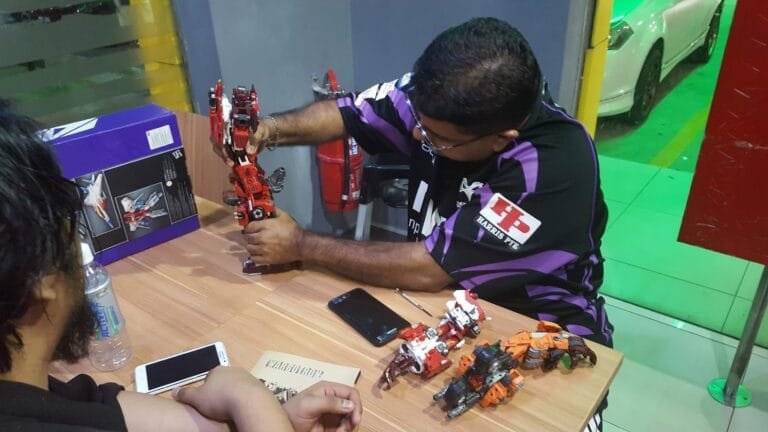Turns out the helmer was only half-kidding. Just ask the visual effects studios on "Transformers: Revenge of the Fallen," who have their hands full keeping up with Bay's itch for excess.
"He's brilliant, but he's a challenge," says Matthew Butler, Digital Domain's vfx supervisor on the film. Not only is Bay demanding, as top directors generally are, but "he's incredibly fast-paced. He's a whirlwind to keep up with, both on the set and in post."
Scott Farrar of Industrial Light and Magic, lead vfx supervisor on both "Transformers" films, sounds somewhat awestruck as he compares the sequel to its predecessor.
"Michael took the production value up many, many notches," he says. "Just the backgrounds alone are huge. It's a combination of 'Apocalypse Now' and 'Ben-Hur,' in regards to fantastic backgrounds and the unbelievable sets we worked at around the world."
Everyone involved in "Revenge of the Fallen" is keeping the details under wraps, but Farrar says there are some 60 robot characters, and they play in settings around the world. Some, like refineries at night, were chosen to boost the visual drama and show off the scale of the giant 'bots.
What's more, this time the Transformers will interact much more with the world around them. Farrar highlights "the splashes and the hits and the fighting on dirt or moving, banging into trees," explaining, "Things splinter and break, they spit, they outgas, they sweat, they snort."
ILM, having developed the vfx for the first "Transformers," is the lead shop on this one as well. But Bay is part owner of Digital Domain, which presents some unusual challenges for Butler and the DD team.
For Bay, co-owning the company puts him in a potential conflict of interest. The director always wants the best for his movie and usually asks for as much as possible from the vfx shop. The owner of a vfx shop, on the other hand, has to keep an eye on costs and margins.
Butler says Bay is remarkably good at balancing those roles: "Michael is very fiscally responsible. a director but he's very much a producer too. In fact, whenever we're talking about any shot or sequence, he's thinking about what it costs, and he's thinking about bang for the buck."
One new challenge is that several sequences will be shown in Imax format, approximately 16 times larger than 35mm, which means the CG work must be finished at much higher resolution. At that scale, it can take several days to render a final frame.
All this is on top of creating a new family of giant robots. "(Bay) had to learn a whole litany of new things by getting into this robot culture on the first film," Farrar says. "I don't think he'd ever worked on a film where he'd done so much directing of animated characters. So he's really taken it to heart, and I think not everybody does, but he actually enjoys the process."
Source: Variety
{mosgoogle}

 After "Transformers" hit theaters in 2007, Michael Bay spoofed himself in a Verizon FiOS commercial, proclaiming, "I demand things to be awesome!" and proving it by flaunting his "awesome pussycat" (a tiger) and awesome (exploding) barbecue grill.
After "Transformers" hit theaters in 2007, Michael Bay spoofed himself in a Verizon FiOS commercial, proclaiming, "I demand things to be awesome!" and proving it by flaunting his "awesome pussycat" (a tiger) and awesome (exploding) barbecue grill.



